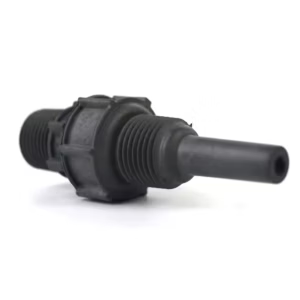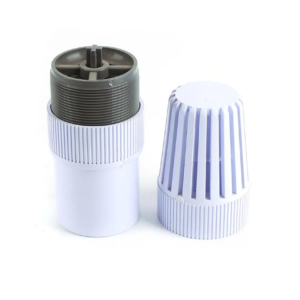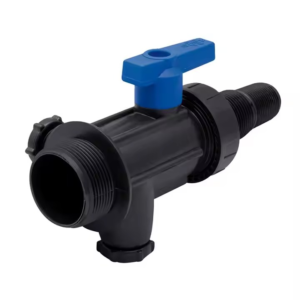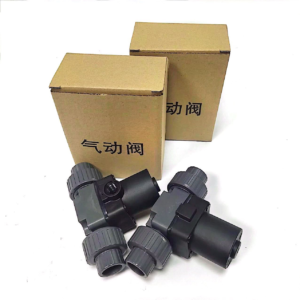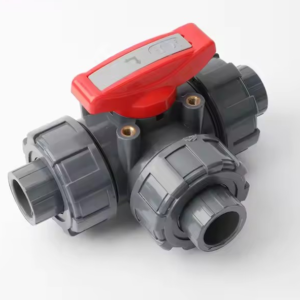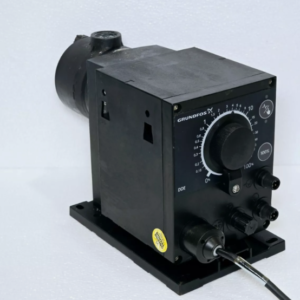-
1/2” Injection Valves
₦47,817.00
Feature Highlights
-
Material & Construction
-
Constructed from durable PVC housing, ideal for chemical resistance in water treatment systems
-
Designed for water treatment applications, ensuring corrosion protection and safe chemical injection.
-
-
Design & Compatibility
-
Injection check valve with built-in check mechanism to prevent backflow into the injection line
-
Compatible with multiple standard series (e.g. P, AA, BC, HH) and common pump types, fitting ½″ OD tubing & ½″ NPT fittings.
-
-
-
Foot Valves
₦51,403.28
Key Components
-
Strainer/Screen: Mounted on the inlet to block particles
-
Valve Body: Made from cast iron, bronze, stainless steel, PVC, or plastic. Sized larger than the pipe to reduce flow resistance
-
Seat & Disc (Ball, Flapper, or Spring Type): Automatically open under suction and shut under backflow
-
Threaded Connection: Usually male or female threads used for easy installation onto the suction pipe
-
-
Nipple Valves
₦13,041.00
Application-Specific Variants
-
Domestic Water Use: Integrated check valve nipple (e.g. R189V) ensures compliance with potable water standards like ACS / KTW.
-
Leak-Detection Systems: FIG 530 models include calibrated expansion relief (e.g., 25 psi, 50 psi) to maintain system integrity.
-
Gas Regulator & Instrumentation: High-pressure nipple-check valves (e.g., CGA-346/510) rated up to 3000 psi for air, acetylene, propane, and natural gas.
-
-
PVC-U Pneumatic Diaphragm Valve
₦86,940.00
DN15–DN100 UPVC Pneumatic Diaphragm Valve
Key Features
-
Size Range: DN15–DN100 (½″–4″) covered under EPDM diaphragms; EPDM/PTFE available up to DN50
-
Body Material: UPVC (PVC-U), chosen for chemical resistance and lightweight design
-
Diaphragm Options: EPDM or EPDM/PTFE seals for various fluid compatibilities
-
Actuation & Air Supply: Pneumatically operated, with options for double-acting or single-acting modules; air pressure ~0.6 MPa (5.5–6 bar)
-
End Connections: True-union design with DIN spigot or socket/flanged (DIN, ANSI, JIS) ends
-
Position Indicator & Leak Detection: Optical position indicators and a leak-detection port come as standard.
-
Flow Performance & Maintenance: Flow-optimized, compact, lightweight, with easy diaphragm replacement.
-
Applications: Ideal for corrosive or inert fluids in industries such as water treatment, chemical processing, labs, food/beverage, and pharmaceuticals
-
-
Three-way Valves
₦154,000.00Original price was: ₦154,000.00.₦128,508.19Current price is: ₦128,508.19.Three-Way Valve – Versatile flow control solution for diverting or mixing fluid streams.
A three‑way valve is a mechanical flow-control device featuring three ports—commonly configured as one inlet/two outlets (diverting) or two inlets/one outlet (mixing). It enables seamless flow manipulation between multiple pipelines within a single valve body
Key Features
-
Flexible configurations: Available in L-port (diverting) or T-port (mixing/diverting) internal geometries
-
Actuation options: Operable manually via lever/handwheel, or automatically using pneumatic, electric, or hydraulic actuators
-
Rugged construction: Built with durable materials like brass, stainless steel, carbon steel, PVC, and specialized elastomer seals—ideal for water, chemicals, steam, and oil
-
Leak-resistant design: Precision-engineered ball, plug, or disc mechanisms ensure tight sealing and dependable performance
-
